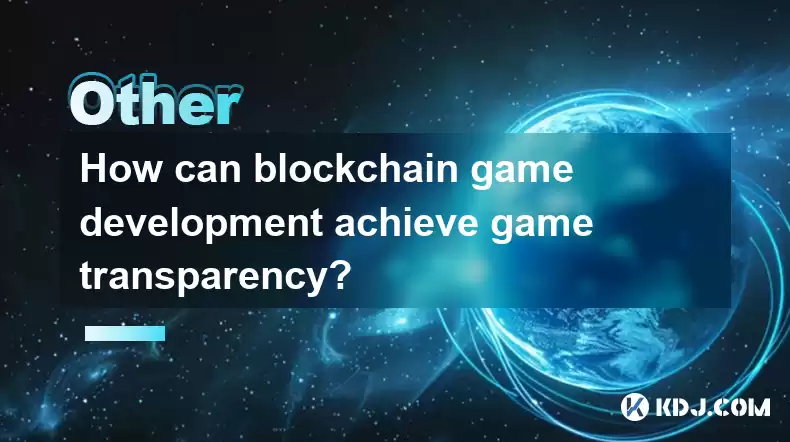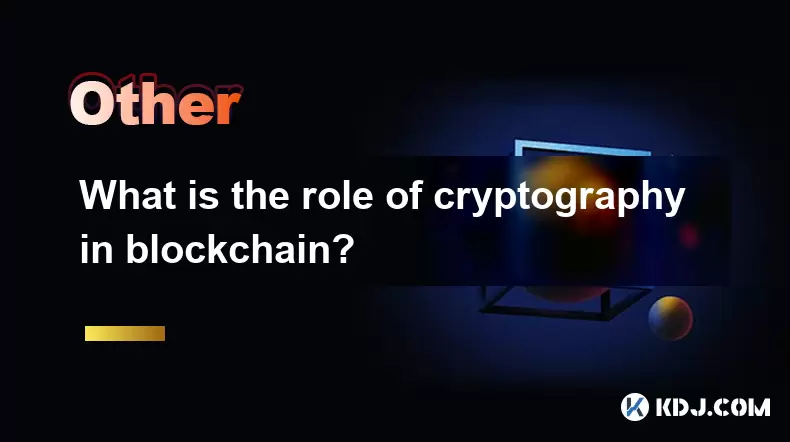-
 Bitcoin
Bitcoin $112400
-1.07% -
 Ethereum
Ethereum $3409
-3.27% -
 XRP
XRP $2.784
-6.60% -
 Tether USDt
Tether USDt $0.9997
-0.03% -
 BNB
BNB $739.3
-2.09% -
 Solana
Solana $158.0
-2.90% -
 USDC
USDC $0.9998
-0.02% -
 TRON
TRON $0.3213
-0.94% -
 Dogecoin
Dogecoin $0.1929
-5.01% -
 Cardano
Cardano $0.6974
-2.82% -
 Hyperliquid
Hyperliquid $36.69
-2.31% -
 Sui
Sui $3.327
-4.80% -
 Stellar
Stellar $0.3672
-5.18% -
 Chainlink
Chainlink $15.65
-3.07% -
 Bitcoin Cash
Bitcoin Cash $525.0
-1.68% -
 Hedera
Hedera $0.2291
-6.00% -
 Avalanche
Avalanche $20.91
-2.96% -
 Ethena USDe
Ethena USDe $1.000
0.00% -
 Toncoin
Toncoin $3.520
-1.12% -
 UNUS SED LEO
UNUS SED LEO $8.968
0.14% -
 Litecoin
Litecoin $105.7
0.26% -
 Shiba Inu
Shiba Inu $0.00001181
-1.79% -
 Polkadot
Polkadot $3.492
-2.08% -
 Uniswap
Uniswap $8.800
-3.10% -
 Dai
Dai $0.9999
-0.01% -
 Monero
Monero $289.9
-3.17% -
 Bitget Token
Bitget Token $4.243
-1.27% -
 Pepe
Pepe $0.00001006
-3.67% -
 Cronos
Cronos $0.1248
-5.68% -
 Aave
Aave $249.7
-2.50%
How can blockchain game development achieve game transparency?
Blockchain game development enhances transparency by using decentralized ledgers, smart contracts, and cryptographic proofs to ensure fair play and verifiable transactions.
Apr 20, 2025 at 05:35 pm

Blockchain game development has become a revolutionary approach to ensuring transparency within the gaming industry. By integrating blockchain technology, developers can create games that are not only more secure and fair but also transparent in their operations. This article explores how blockchain game development can achieve game transparency, detailing the mechanisms and benefits of this approach.
Understanding Blockchain Technology in Gaming
Blockchain technology is a decentralized ledger system that records transactions across numerous computers. In the context of gaming, this technology can be used to track in-game assets, player actions, and other critical data in a transparent and immutable manner. By leveraging blockchain, game developers can ensure that all game-related data is verifiable and tamper-proof, which is fundamental to achieving transparency.
The key to blockchain's transparency lies in its distributed nature. Instead of having a single entity control the game's backend, blockchain distributes the control among multiple nodes. This means that any changes or transactions within the game must be verified by a consensus of these nodes, making it nearly impossible to manipulate data without detection.
Implementing Smart Contracts for Fair Play
Smart contracts are self-executing contracts with the terms of the agreement directly written into code. In blockchain games, smart contracts can automate various game mechanics, ensuring that the rules are followed without the need for intermediaries. This automation is crucial for maintaining transparency, as it allows players to see and verify the logic behind game outcomes.
For example, in a blockchain-based card game, smart contracts can be used to manage the distribution of cards, ensuring that the process is random and fair. Players can inspect the smart contract code to understand how the game operates, fostering a higher level of trust and transparency.
Utilizing Public Ledgers for Transaction Transparency
Public ledgers are another cornerstone of blockchain technology that contribute to game transparency. Every transaction within a blockchain game is recorded on a public ledger, which is accessible to all players. This transparency in transactions ensures that players can verify the movement of in-game assets, such as virtual currency or items, at any time.
In a game where players can trade items, the use of a public ledger means that all trades are recorded and can be audited. This eliminates the possibility of fraudulent activities, as any discrepancies would be immediately noticeable on the ledger.
Enhancing Player Trust through Decentralized Governance
Decentralized governance is a model where decision-making power is distributed among the game's community rather than being centralized with the developers. By implementing decentralized governance, blockchain games can achieve a higher level of transparency in how the game evolves and is managed.
Players can vote on proposed changes to the game, such as new features or updates, ensuring that the development process is transparent and inclusive. This approach not only enhances transparency but also fosters a sense of ownership and engagement among the player base.
Ensuring Data Integrity with Cryptographic Proofs
Cryptographic proofs are used in blockchain to ensure the integrity of data. In gaming, these proofs can be used to verify the authenticity of game states and player achievements. By providing cryptographic evidence that the game data has not been altered, blockchain games can maintain a high level of transparency.
For instance, when a player achieves a high score or wins a tournament, cryptographic proofs can be used to validate that the result was achieved fairly and without manipulation. This level of verification is crucial for maintaining trust and transparency in competitive gaming environments.
Implementing Transparent Reward Systems
Transparent reward systems are essential for ensuring that players are fairly compensated for their efforts. In blockchain games, rewards can be distributed through smart contracts, ensuring that the process is automated and verifiable. Players can see exactly how rewards are calculated and distributed, which adds another layer of transparency to the game.
For example, in a game that rewards players with cryptocurrency for completing tasks, the smart contract can be programmed to distribute rewards based on specific criteria. Players can then verify that they have received the correct amount of rewards, ensuring fairness and transparency.
Frequently Asked Questions
Q: Can blockchain technology completely eliminate cheating in games?
A: While blockchain technology can significantly reduce cheating by ensuring transparency and immutability of data, it cannot completely eliminate all forms of cheating. For instance, players can still engage in social engineering or exploit bugs in the game's code. However, blockchain does provide a robust framework for detecting and mitigating cheating more effectively than traditional systems.
Q: How does blockchain affect the scalability of games?
A: Blockchain technology can pose challenges to game scalability due to the need for consensus and the storage of data across multiple nodes. However, developers are working on solutions such as layer-2 scaling and sharding to address these issues, allowing blockchain games to handle larger player bases and more complex transactions.
Q: Are there any privacy concerns with using blockchain in games?
A: Yes, there are privacy concerns associated with blockchain in games, as all transactions are recorded on a public ledger. However, developers can implement privacy-enhancing technologies such as zero-knowledge proofs to allow players to verify transactions without revealing sensitive information. Balancing transparency with privacy is an ongoing challenge in blockchain game development.
Q: Can traditional game developers easily transition to blockchain game development?
A: Transitioning to blockchain game development requires a significant shift in approach and technical skills. Traditional developers need to learn about blockchain technology, smart contracts, and decentralized systems. However, with the right resources and training, it is possible for traditional developers to adapt and create transparent blockchain games.
Disclaimer:info@kdj.com
The information provided is not trading advice. kdj.com does not assume any responsibility for any investments made based on the information provided in this article. Cryptocurrencies are highly volatile and it is highly recommended that you invest with caution after thorough research!
If you believe that the content used on this website infringes your copyright, please contact us immediately (info@kdj.com) and we will delete it promptly.
- Bitcoin Liquidity, Osmosis Zone, and Investor Interest: A Deep Dive
- 2025-08-03 15:16:44
- Web3, Sports, and Computing Power: A New Ballgame
- 2025-08-03 15:16:44
- Ethereum, Altcoin Surge, and the MAGACOIN Presale: What's the Buzz?
- 2025-08-03 15:16:44
- Crypto Whales, Meme Coins, and Moonshots: Navigating the Wild West of 2025
- 2025-08-03 15:16:44
- Hong Kong Stablecoin Licenses: A Tight Squeeze?
- 2025-08-03 15:16:45
- Dogecoin's Bullish Signals: Engulfing Candle and Whale Accumulation Point to Potential Surge
- 2025-08-03 15:16:45
Related knowledge

What is the difference between on-chain and off-chain transactions?
Aug 02,2025 at 04:22pm
Understanding On-Chain TransactionsOn-chain transactions refer to digital asset transfers that are recorded directly on a blockchain ledger. These tra...

What is a node's role in a blockchain network?
Aug 03,2025 at 03:16pm
Understanding the Function of a Node in a Blockchain NetworkA node is a fundamental component of any blockchain network, acting as a participant that ...

What is the double-spending problem and how does blockchain prevent it?
Aug 02,2025 at 01:07pm
Understanding the Double-Spending ProblemThe double-spending problem is a fundamental challenge in digital currency systems where the same digital tok...

What is the difference between a blockchain and a database?
Aug 01,2025 at 09:36pm
Understanding the Core Structure of a BlockchainA blockchain is a decentralized digital ledger that records data in a series of immutable blocks linke...

How does blockchain handle scalability?
Aug 02,2025 at 02:58pm
Understanding Blockchain Scalability ChallengesBlockchain scalability refers to a network's ability to handle an increasing volume of transactions wit...

What is the role of cryptography in blockchain?
Aug 03,2025 at 03:42pm
Understanding the Foundation of Blockchain SecurityCryptography is the cornerstone of blockchain technology, providing the essential tools to ensure d...

What is the difference between on-chain and off-chain transactions?
Aug 02,2025 at 04:22pm
Understanding On-Chain TransactionsOn-chain transactions refer to digital asset transfers that are recorded directly on a blockchain ledger. These tra...

What is a node's role in a blockchain network?
Aug 03,2025 at 03:16pm
Understanding the Function of a Node in a Blockchain NetworkA node is a fundamental component of any blockchain network, acting as a participant that ...

What is the double-spending problem and how does blockchain prevent it?
Aug 02,2025 at 01:07pm
Understanding the Double-Spending ProblemThe double-spending problem is a fundamental challenge in digital currency systems where the same digital tok...

What is the difference between a blockchain and a database?
Aug 01,2025 at 09:36pm
Understanding the Core Structure of a BlockchainA blockchain is a decentralized digital ledger that records data in a series of immutable blocks linke...

How does blockchain handle scalability?
Aug 02,2025 at 02:58pm
Understanding Blockchain Scalability ChallengesBlockchain scalability refers to a network's ability to handle an increasing volume of transactions wit...

What is the role of cryptography in blockchain?
Aug 03,2025 at 03:42pm
Understanding the Foundation of Blockchain SecurityCryptography is the cornerstone of blockchain technology, providing the essential tools to ensure d...
See all articles

























































































